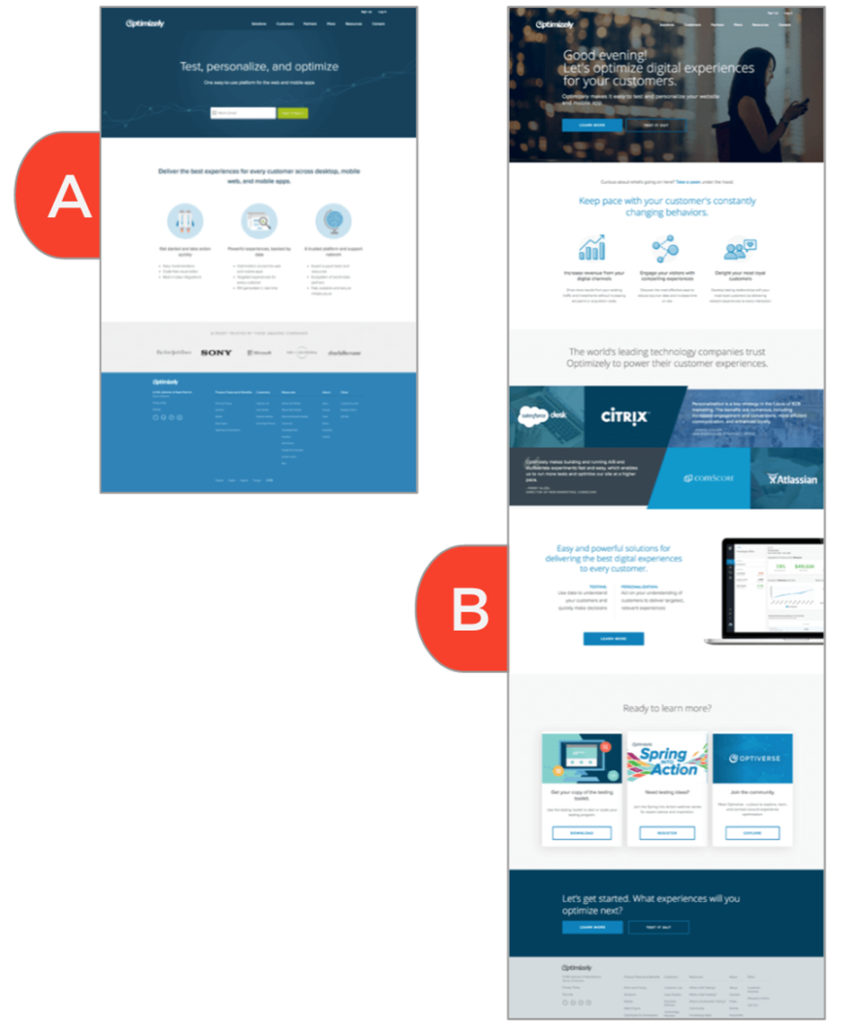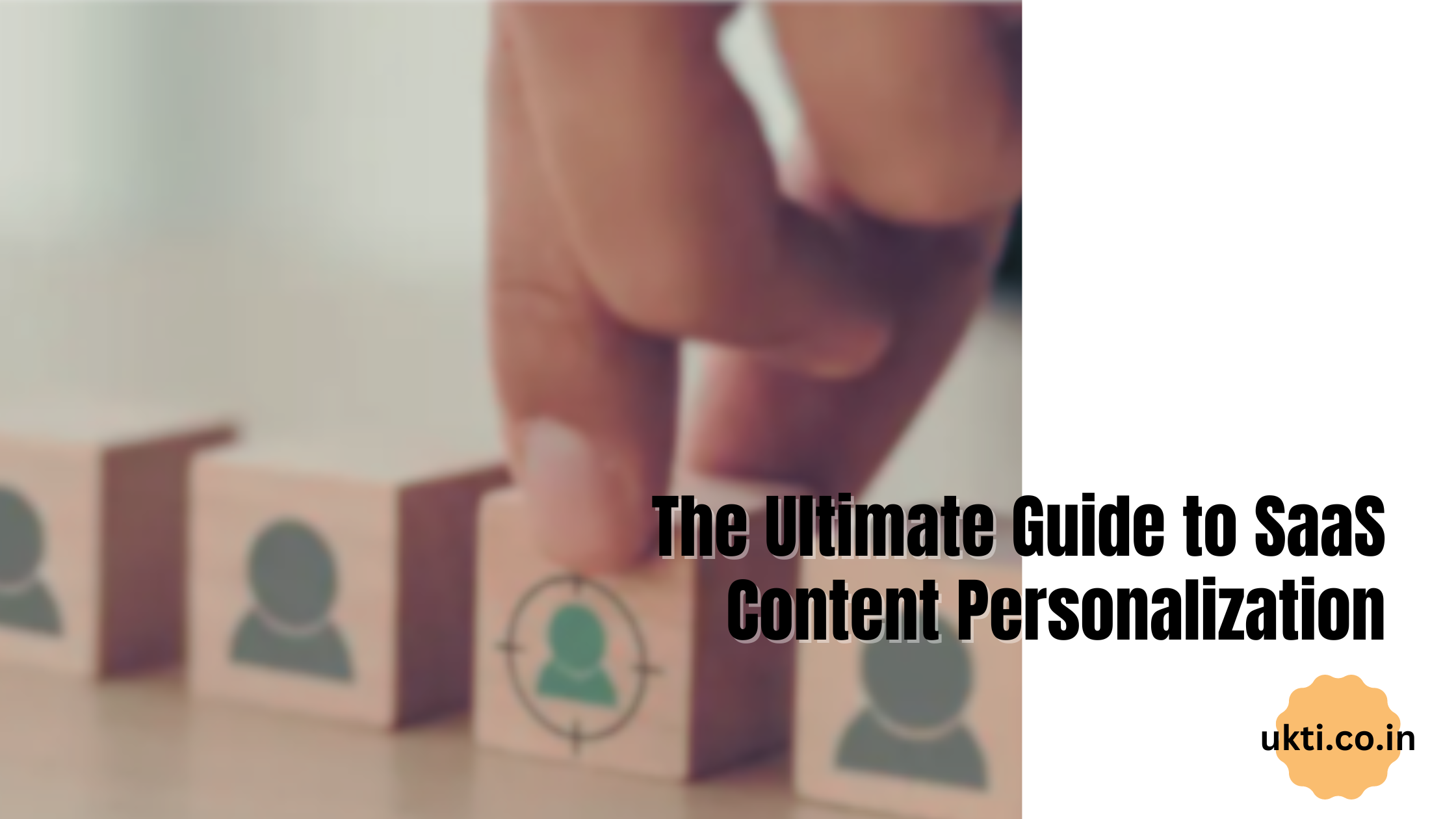According to Google, 90% of marketers agree that personalization contributes to business profitability. However, almost 50% of SaaS businesses don’t have a documented personalization strategy.
If you wonder where to initiate your journey toward SaaS personalization, the spotlight should invariably be on your content. One simply can’t overstate the role of content personalization within the SaaS space.
Content personalization is pivotal in augmenting website traffic and catalyzing conversion rates. The strategy extends beyond mere customer guidance and education. It also helps forge trust by carefully crafting experiences that resonate with each individual’s needs and wants.
So, let’s explore five effective SaaS personalization strategies to tailor content to your audience’s unique needs and preferences.
The Essence of Personalization in SaaS
The SaaS space is competitive, so adopting a one-size-fits-all approach bears no fruit. Simply addressing the user by name in emails won’t lead to conversion. You must deliver content that resonates with their specific needs, challenges, and stages in the customer journey.
The benefits personalization is SaaS content marketing are manifold. Businesses see increased engagement, improved customer satisfaction, and higher retention rates. Users, on the other hand, enjoy more relevant, timely, and engaging interactions with the software they use.
Even numbers back these claims –
- Around 90% of customers are more likely to become repeat buyers if brands offer tailored user experiences.
- In fact, 80% of customers are willing to share data with brands for a more personalized experience.
- Moreover, companies using personalization earn $20 for every $1 they spend.
Where Should You Begin?
SaaS personalization is an ongoing process. You continue to learn more about your users and optimize your strategies for better results. The key here is to be aware of the needs and wants of your audience. And that’s also a good place to start your personalization efforts.
Here are some steps you must take to learn about your audience and their behaviors:
#1 Segment Your Audience:
Categorize your audience into distinct groups based on shared characteristics such as demographics, behavior, or preferences. This allows you to deliver more targeted and relevant content to your audiences.
#2 Utilize Analytics Tools:
Deploy analytics tools to gain insights into user behavior and engagement. This will also help you gauge what resonates with your audience. So, you’ll be able to segment your audience accurately and implement effective personalization strategies.
#3 Create Buyer Personas:
Develop detailed buyer personas using data from your audience analysis. These personas should reflect your ideal customers’ needs, challenges, and goals, enabling you to tailor your content more effectively.
5 Personalization Strategies for SaaS Content
Here are some strategies to personalize your SaaS content marketing:
#1 Personalize Home Page
Your site’s homepage is often the first thing that audiences visit. It serves as the initial introduction of your brand to a visitor. Therefore, why not start by personalizing of its content?
First, segment your target audiences into two groups – new and returning users (or registered users). Since these users are at different awareness stages in their customer journey, they have distinct needs and wants. So, they’ll also need a unique value proposition to convert.
To achieve this, create a unique homepage experience for these by displaying dynamic content. It should align with users’ awareness stage and the problems they want solutions for. The dynamic content can include marketing messages, product/feature showcases, and CTAs.
For instance, Gusto, an HR software, introduces its solution and invites new users to sign up. This works because a new visitor probably came looking for payroll services, and the copy confirms they are at the right place. The prominent CTA motivates them to register or explore the software further.

When existing users land on Gusto’s homepage, they see a “Welcome Back” message. Also, they get the option to log in directly to their account. Similarly, you can also customize the CTA to upsell or ask existing users to upgrade their subscriptions.

#2 Personalize Landing Pages
Not all your site visitors will go directly to your homepage. They often land on product pages or landing pages designed to drive conversions like sign-ups or downloads.
Similar to home pages, it’s essential to use dynamic content on these pages as well. But now, you must go beyond differentiating between new and returning users. Instead, consider your audience’s demographic details, such as their location, designation, or industry. Think of how Netflix rearranges its home tab as per your profile.
Shopify is an example of a brand that effectively uses location to personalize its product pages. It adds a “Popular with businesses in [country]” tag below the product’s name. The country name dynamically changes based on the user’s location, increasing the likelihood of conversion.

Furthermore, statistics show that personalized landing pages addressing the buyer’s immediate concern can increase conversion rates by 80%. Suppose your SaaS product caters to both small and large businesses. Then, your product pages must showcase features specific to those business sizes.

#3 Use Adaptive Navigation Menu
According to Forrester, 50% of sites lose potential sales because of poor navigation. Therefore, your site’s menu must help users find products and pages they seek without hassle. Rethinking the navigation menu from a personalization perspective can help you create a design that drives engagement and conversions.
First and foremost, you must optimize your site’s design, including the menu, for mobile. Use responsive menu designs that adapt to different screen sizes depending on the user’s device. This is a basic but effective tactic, given that 80% of B2B buyers use phones to research their options.
Next, you must ensure the menu displays content relevant to different segments. For example, Coursera displays unique menu options to a signed-in user compared to its default menu. This approach tailors the browsing experience and makes it easier for users to find what they seek.

#4 Personalize Call of Action
A Call to Action (CTA) is the final nudge that motivates a user to convert. While you can make your product pages informative and your ads engaging, presenting the wrong CTA to the wrong users will lead to no conversion. On the other hand, personalized CTAs can generate 202% more conversions than generic ones.
There are several ways to personalize CTAs. For example, SaaS companies like Sezzle show unique CTAs to customers and potential customers. They distinguish between the two groups and tailor the message to their unique needs.
Similarly, Sprig personalizes CTAs for lead generation based on their target market. Small businesses and startups see a CTA to sign up for a free account, catering to their likely desire for low-risk trials. In contrast, large businesses get CTAs inviting them to contact the company.
This method acknowledges the different needs and decision-making processes of a small business compared to a large enterprise.

#5 Send Custom Emails Nudges
Email sits at the heart of digital marketing, offering a direct line to connect with your audience outside your website. In SaaS content marketing, email presents an ideal opportunity to deliver personalized experiences to your customers.
You must not stop at addressing users by their first names in your email marketing campaigns. Instead, you must analyze users’ behavior and past actions and identify opportunities to improve their engagement with your brand.
For example, upon sign-up, you can send new users an onboarding email to welcome them to your platform. Or, you can go one step further like Eventbrite. The brand explains how their solution works and provides a link to support options. This helps you integrate new users into your service smoothly.

There are times when users struggle to complete an action within a SaaS tool. They often leave the platform to look for solutions. In case they find a better alternative, they may never return. Again, personalization helps you win such users back.
Zapier’s marketing team sends targeted emails to users inviting them back to the platform along with some tips and tricks. This proactive approach helps you re-engage users and address issues they may have experienced, improving their perception of your brand.

Bottom Line
Personalization in SaaS content marketing isn’t just a trend; it’s an imperative for businesses aiming to thrive in a competitive digital ecosystem. By deeply understanding your audience and employing effective personalization strategies, you can deliver exceptional personalized experiences that resonate deeply with their users.
For more insights into SaaS content, the latest news, and exciting developments, make sure to subscribe to our newsletter!

